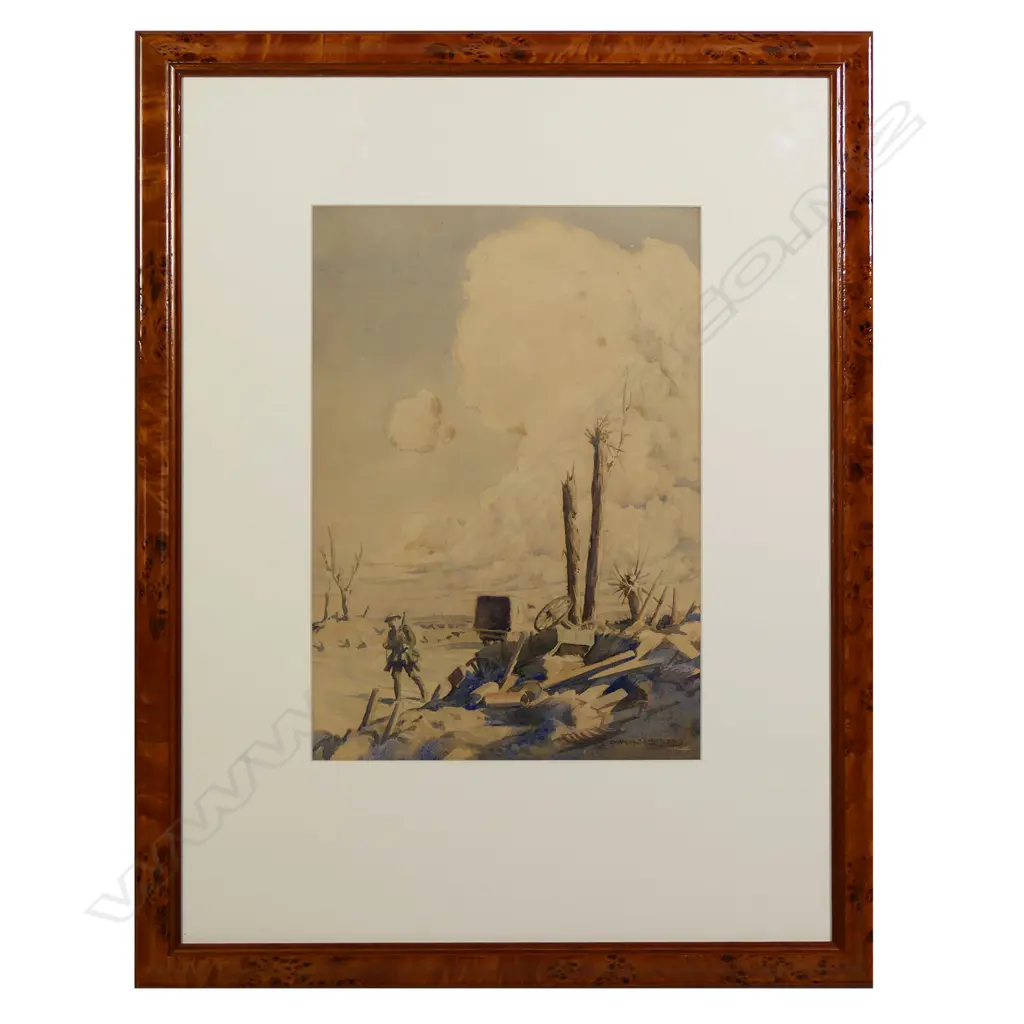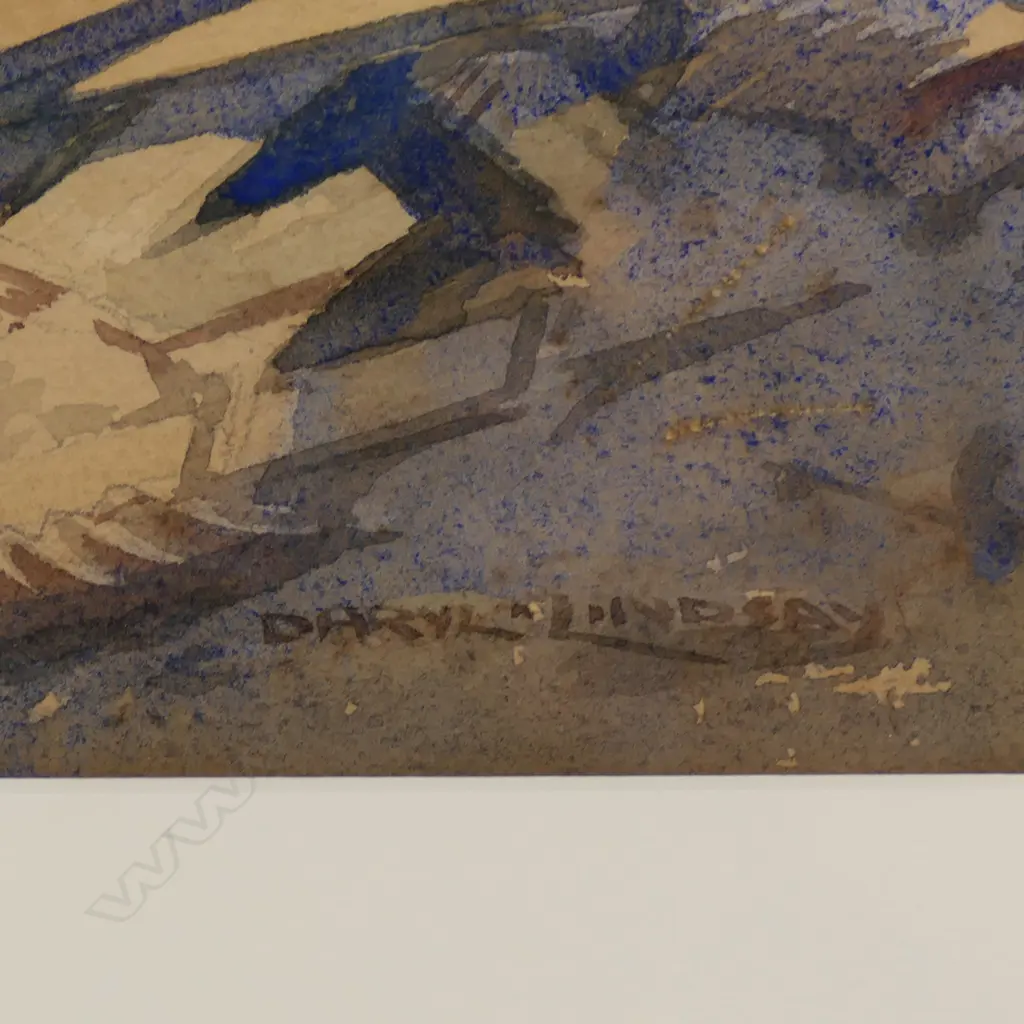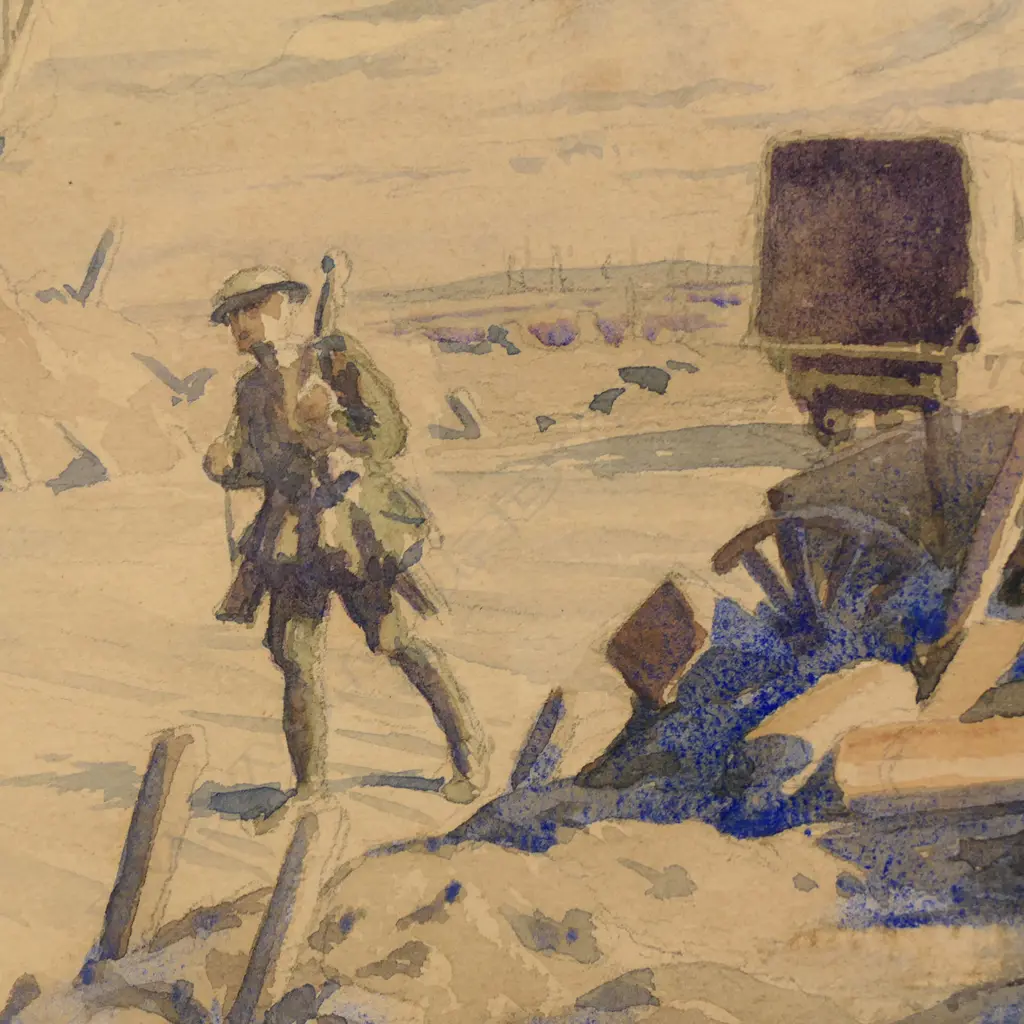JEWELLERY, DECORATIVE & FINE ARTS AUCTION Tuesday, 30 November 2021 / 10:00 am start
Sir Ernest Daryl Lindsay (1889-1976)
Lot Details
World War I scene, watercolour on paper, signed, 365 x 260mm. Note: Lindsay a painter, illustrator and gallery director, was born at Creswick (Vic.) on 31 December 1889, the second youngest child of Dr Robert Charles Lindsay and his wife Jane Williams. Early childhood ear infections left him with permanent deafness in one ear, which he sometimes used to his advantage. Because he was so much younger than his artist siblings Daryl had little contact with them as a child, and did not join them in their Melbourne illustrating careers. Indeed he was at first more interested in horses than art and spent some years working as a jackaroo. Even though his hearing problems should have precluded him from a military career he enlisted in the AIF, in the Service Corps and served in France. In 1916, while on leave in London, he met with his sister Ruby and her husband Will Dyson, who was Australia’s first official war artist. On 31 December 1916, Daryl’s birthday, his brother Reg who was a gunner, was killed. within weeks Dyson had organised for Daryl to become his batman. This new position moved him away from the front line and also introduced him to art, encouraging him to draw alongside him. C.E.W. Bean, Australia’s official historian for World War I, appointed him as an artist alongside his mentor. Daryl also drew studies for army surgeons, creating an accurate medical record of injuries. This led to being appointed as the official medical artist to the Sidcup Hospital for facial reconstruction. He subsequently befriended the plastic surgeon, Harold Gillies, who was also a landscape painter. This connection led to a friendship with Sir Henry Tonks of the Slade. Daryl subsequently studied drawing at the Slade one day a week and through this connection as well has his family links, came to mix socially with artistic and literary London. In early 1919 Daryl and Ruby paid a short visit to their Irish relatives. She became ill on the journey home, and died soon after, an early victim of the Spanish Influenza. He returned to Australia the same year and held his first exhibition of drawings at the Decoration Galleries in Melbourne. In 1921 he returned to London where he became engaged to Joan Weigall, a cousin of the Boyds. They married on 14 February 1922 and as Joan Lindsay she became one of Australia’s most loved writers. In 1925 they built their home at Mulberry Hill, at Baxter on the Mornington Peninsular. Here Daryl painted: landscapes, still lives and his most popular subject matter, racehorses. Friends, including the artist George Lambert, came to stay and it was here that Lambert drew his portrait of the elderly Jane Lindsay. When the Great Depression made life too expensive, they leased Mulberry Hill, and moved to Bacchus Marsh where he scraped a living as a black and white artist and made paintings on a small scale. Although without money, he was not without influence and in 1930 was able to lobby to have his brother Norman 's novel Redheap banned in Australia. He invented the 'Ben Bowyang’ comic strip for the Melbourne Herald in 1933 with gags supposedly by C.J. Dennis, who rarely delivered them. Once they had money saved Daryl and Joan Lindsay travelled by cargo boat to Europe. In London Daryl made many studies of the de Basil company’s ballet dancers. The subsequent exhibition was a resounding commercial success. After returning to Australia and Mulberry Hill, Sir Keith Murdoch persuaded Daryl to take the post of curator at the National Gallery of Victoria. After Murdoch engineered the removal of J. S. (Jimmy) MacDonald, Daryl Lindsay was offered the post of Director in 1942. Daryl Lindsay encouraged the scholarship of his curator of prints and drawings, Dr Ursula Hoff, and also worked with Professor Joseph Burke to lift the standard of art scholarship in this country. Through his friendship with Sir Robert Menzies and as a member of the Commonwealth Art Advisory Board he advanced the cause of national gallery for Australia and ensured that its first interim director was his nominee, James Mollison. In his old age Daryl continued to paint, and also kept a connection to the Ballarat Fine Art Gallery where he was Trustee. The last young gallery director he mentored was Ron Radford, later director of the National Gallery of Australia. Writers: Kerr, Joan Mendelssohn, Joanna. Date written:1996. Last updated:2007




